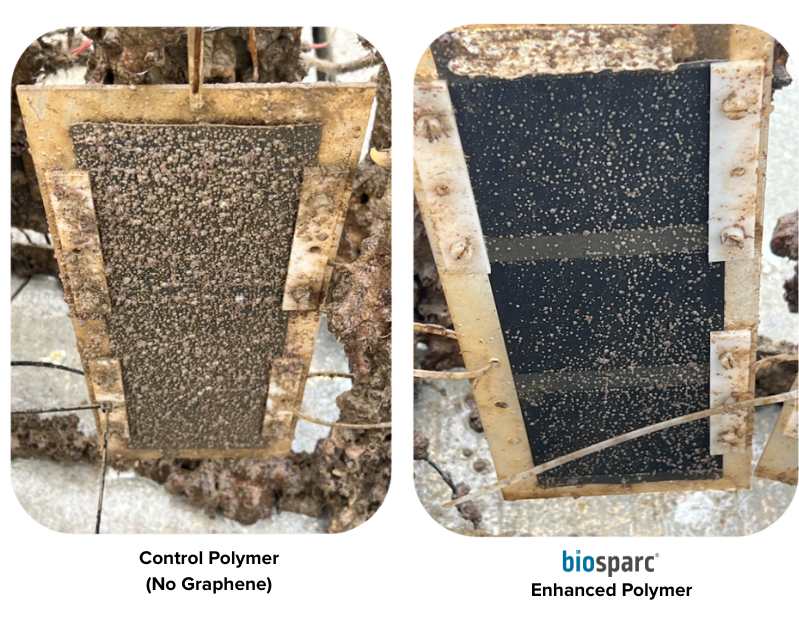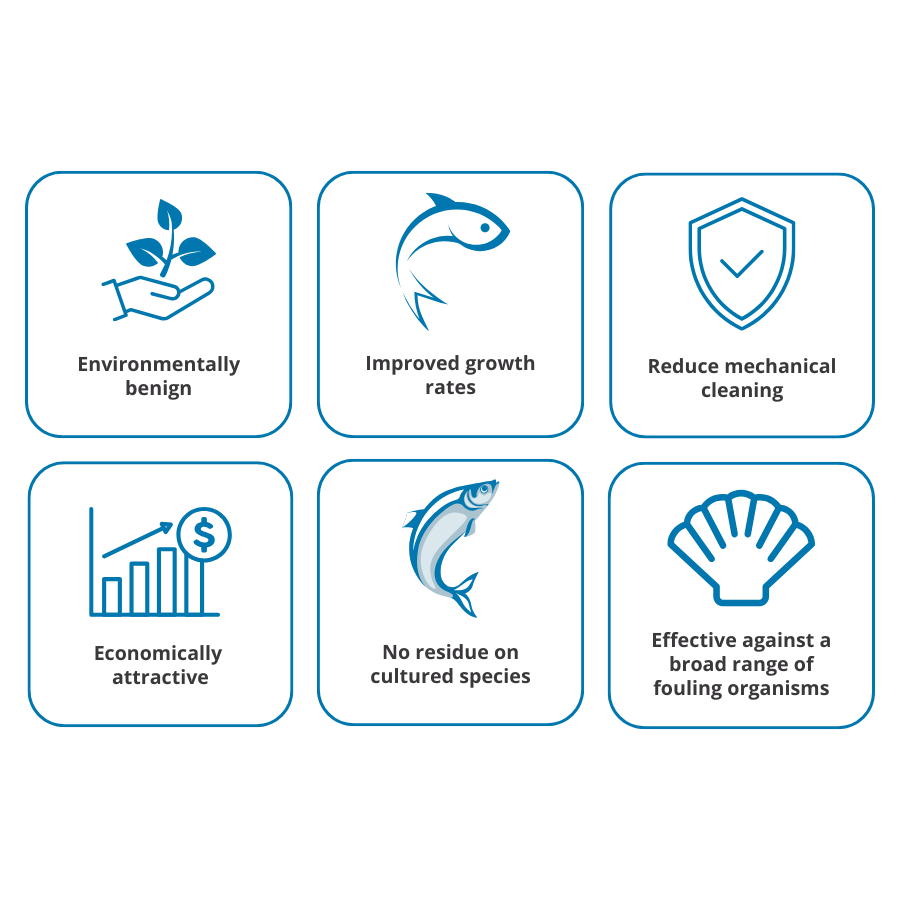

Biosparc® – The Future of Antifouling Technology
Biosparc® is a graphene-enhanced polymer technology being developed under an Australian Government AEA grant to improve aquaculture netting. By reducing biofouling and increasing net strength and durability, Biosparc aims to lower operational costs, improve fish health and biosecurity, and extend the lifespan of aquaculture infrastructure.

Proven Peformance In Real World Testing
Independent testing in the Port River, conducted at the South Australian Research and Development Institute (SARDI) in collaboration with Flinders University, demonstrated the effectiveness of Biosparc:
-
Standard polymer coating: ~70% biofouling coverage
-
Biosparc-enhanced polymer: ~18% biofouling coverage
Ongoing lab and field trials continue to refine polymer formulations and optimise performance for even greater biofouling resistance.
Biosparc® aligns with global sustainability goals by eliminating the use of toxic chemicals in antifouling coatings, offering a greener alternative for the maritime industry.

Performance that preserves and protects
Leveraging the exceptional conductive and surface-modifying properties of graphene, biosparc® delivers a breakthrough approach to biofouling control, without the use of biocides.
By minimising organism growth and biofilm formation, biosparc® helps maintain cleaner aquaculture nets for longer, supporting healthier stock and more efficient fish farm operations.
The result:
• Increased dissolved oxygen concentration
• Improved growth rates and feed conversion
• Reduced morbidity and parasitic impact
• Less frequent and less abrasive mechanical cleaning
• Extended net lifespan
• Enhanced overall productivity
Biocide-free. Environmentally responsible. Scientifically proven performance.

Government-Backed Innovation in Aquaculture Netting
Sparc Technologies, in partnership with Flinders University, has received funding through the Australian Government’s Economic Accelerator (AEA) program to develop advanced aquaculture netting. The 12-month project focuses on a graphene-enhanced material designed to reduce biofouling, increase net strength and durability, and extend the operational lifespan of aquaculture infrastructure.
Prototype testing is underway with the support of an Australian aquaculture company to validate performance in real-world conditions.



